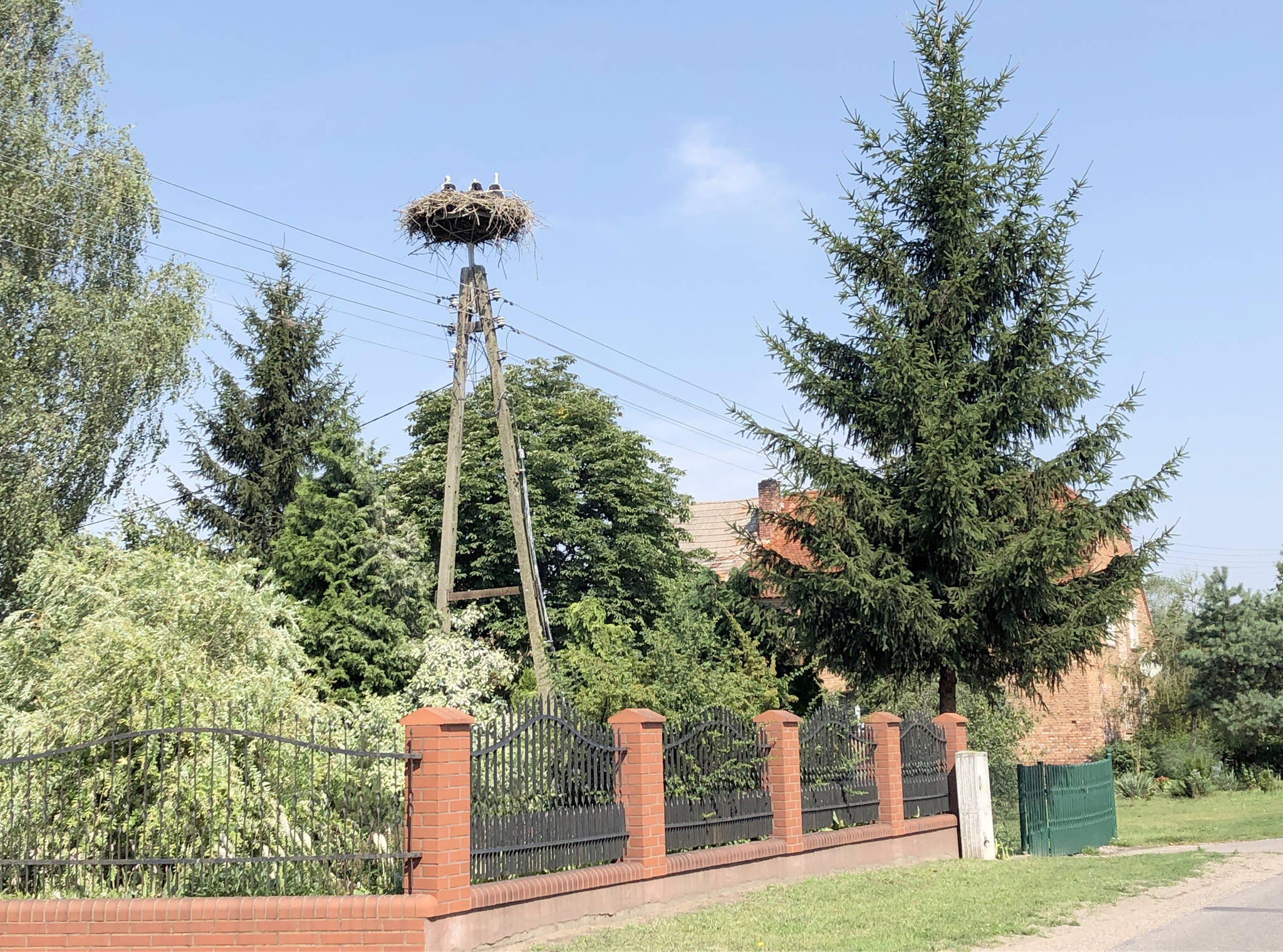This last month I had the wonderful opportunity to travel to Poland with my family. The trip was organized by my father-in-law, Henry, who lived in Poland until he was 17. Henry has been looking forward to showing his grandsons the places of his youth and sites important in family history.
We started in the northern city of Gdansk on the Baltic Sea with a couple rental cars. One car was navigated by Google Maps and the other by reading road signs and childhood recollection.
Having a guide fluent in the local language is really great, and live traffic updates can be helpful. Visiting the northern towns of Henry’s childhood brought us to charming small towns and through vast farmlands that reminded me of the Midwest, with fields of wheat waving in the wind.
We were way off the tourist grid, but people have been here for thousands of years creating a rich and interesting history.
While driving down a country road, I saw an enormous nest with two equally large cranelike birds in it. I pulled over like a tourist in Alaska spotting a moose along the road.
It took a few seconds of looking at this big white and black bird with a long red beak to identify a bird of childhood lore, a white stork. The nest was larger than most eagle nests I have seen, at least 6 feet wide and more than 3 feet thick.
There were multiple songbirds nesting within the sides of the nest, too. As we drove along we saw several more nests on power pole and rooftop platforms. There was an obvious mutual tolerance between storks and locals.
Frankly, I don’t think I would care for a giant bird nest on my roof.
Henry explained the storks have long been considered to bring good luck and prosperity. They directly benefit farmers by eating locusts and grasshoppers during the summer. Storks are excellent mousers too, and can be seen walking behind grain combines catching them.
This unique cultural tradition of protecting the stork in Poland dates back several centuries. Records of people caring for storks in their homes during the winter are found in manuscripts from the 1400s.
The practice of building nest platforms has been well documented for over 200 years. A common folk belief was that having a stork on your homestead brought good fortune to the inhabitants.
It was also thought that storks had the power to bring natural disasters, such as fire, hail and floods, to those who treated them poorly. People who harmed storks were ostracized from communities.
Storks have long been believed to be harbingers of human fertility. This may come in part from the old German myth of storks delivering babies. I just thought the tale was a way for parents to avoid the birds and bees talk.
Starting in April, over 50,000 storks return to Poland, approximately 20% of the global breeding population. Their return is a herald of spring and a welcome sign that winter is over.
They announce themselves by chattering their bills together. The sound is amplified by a throat pouch.
Males arrive first to claim a nest. Larger nests tend to produce more fledglings and are sought after. A nest can weigh up to one ton, making the act of building a nest platform to encourage nesting on your roof all the more impressive.
The female produces one brood a year with an average clutch size of three to four eggs. The eggs are white and about twice the size of a chicken egg.
Incubation takes about 35 days and both parents take turns feeding and caring for the chicks. They are relatively long-lived birds. The oldest wild stork was recorded to be 39 years old.
In the fall, the storks begin to migrate south to eastern Africa. They overwinter in savanna from Kenya to the southern cape of Africa.
Their large wingspan and broad wings are highly adapted to soar along the thermals. They are one of the world’s highest flying birds, soaring as high as 16,000 feet.
To take advantage of the land thermals, they migrate east of the Mediterranean Sea and travel the coastline through the Middle East. Their migration south takes about 25 days, and twice as long to travel back. This is due to tailwinds and few places to stop for food on the way south.
Storks prefer open grasslands and shallow wetlands. Populations benefited from the agricultural clearing of forests and scrublands during the Middle Ages. However, changes in agricultural practices in the last century led to a decline in populations, triggering conservation and reintroduction programs.
The success of these programs was largely attributed to the cultural tradition of protecting and conserving the stork. All those power pole platforms offer a great example of this.
Over the course of their association with humans, storks have shown a preference for nesting on platforms and man-made structures such as power poles, possibly because tree branches tend to break more frequently under the great nest weight.
Unfortunately, storks were getting electrocuted on the power poles. In the 1990s, power companies started to construct nest platforms to prevent mortality by electrocution. This explains all the power pole nest platforms we were seeing.
The stork is a common motif in Polish poetry and art, and a frequent theme in lawn art and household ornaments. During World War II, when many Poles were driven from their homes, it was a symbol of their love for their country and longing to return. The endearing white stork is magnificent in many ways and it is easy to understand why the bird is so loved in Poland and other places in Europe.
Mark Laker is an Ecologist at the Kenai National Wildlife Refuge. Find more Refuge Notebook articles (1999–present) at https://www.fws.gov/refuge/Kenai/community/refuge_notebook.html.


